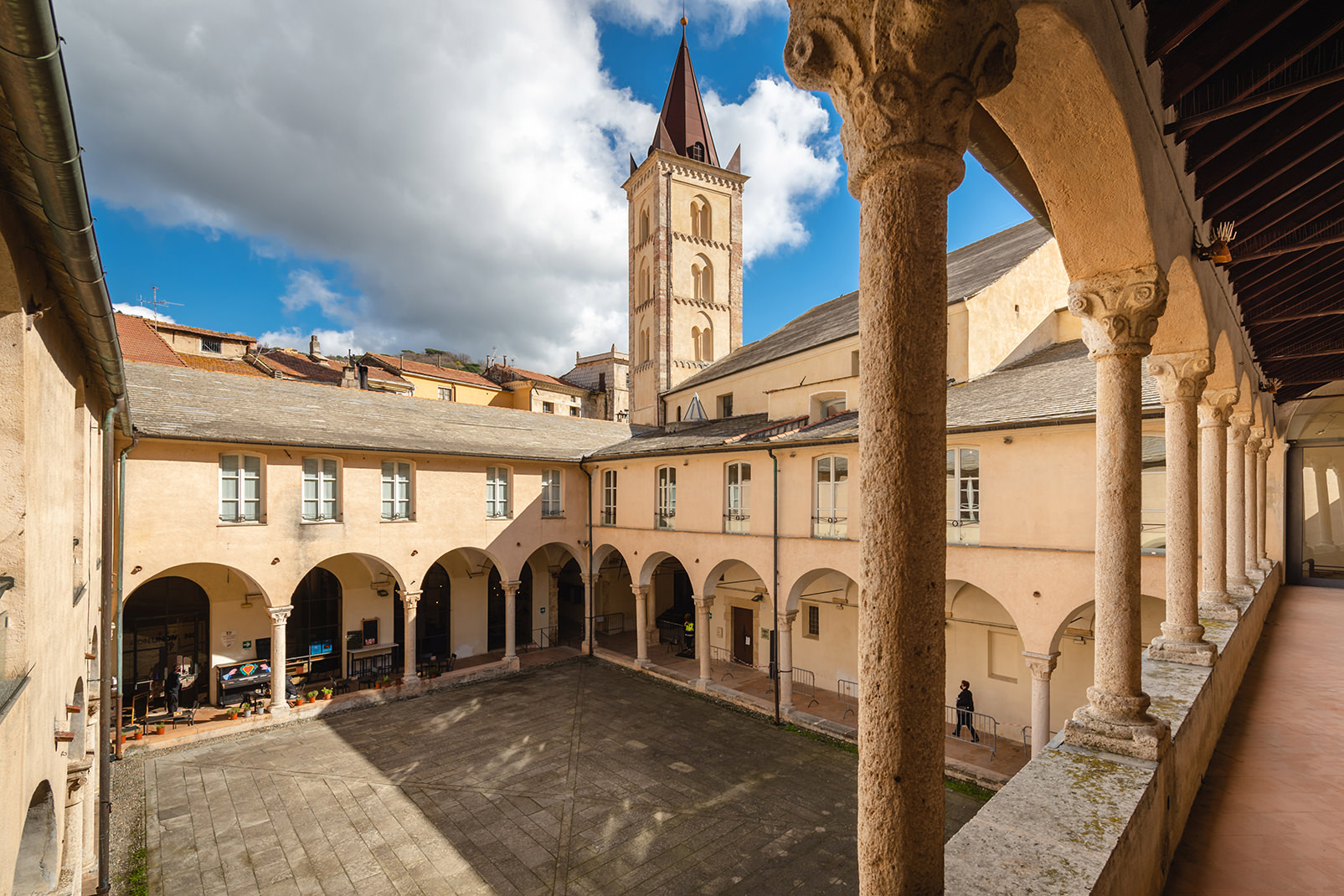The Renaissance

The Renaissance of a landscape: the great Del Carretto patronage
In his Bellum Finariense, humanist Gian Mario Filelfo reported the tale of the disastrous Finale War (1447 – 1449), which ended when the Genoese tore both Castel Gavone and Finalborgo to the ground.

In December 1450, Giovanni I Del Carretto, supported by the French, reconquered his marquisate and quickly set about rebuilding Castel Gavone and the town gates and walls of Finalborgo. Then, in February 1452, Giovanni married Viscontina Adorno, who bore twelve children.


THE RENAISSANCE – 1450-1535 CE
Traces of such restoring of powers can be found in the doors of San Giorgio’s Church in Castel Gavone (1452), in the Testa Town Gate of Finalborgo (1461), in the reconstruction of Palazzo Marchionale (Italian: the Marquis’ Palace) or the Law Courts in Finalborgo (1462), and again, in the original belfry of San Biagio’s Church in Finalborgo, which was erected in the early 1460s. A final example in 1463, is the intervention by Viscontina Adorno on the Church of Santa Maria in Finalpia, where the Olivetan Benedictine monks of the Order of Our Lady of Mount Olivet settled in 1477.
Understandably, such events marked the rise of the Del Carrettos on the political scene of Renaissance Italy. Of Giovanni I’s sons, Carlo Domenico took the cloth, was appointed cardinal by Pope Julius II in 1507 and died in Rome in 1514; Fabrizio entered the Sovereign Order of Saint John of Jerusalem, Knights Hospitaller, was appointed Grand Master of the Order in 1513 and died during the Turkish siege of Rhodes in 1521; Alfonso married Peretta Usodimare Cybo, Pope Innocent VIII’s niece (in Rome in 1488) and lived at the papal court for a time; and Ludovico succeeded his brother Carlo Domenico as bishop of the wealth French diocese of Cahors.
Clearly influenced by Tuscan and Lombard art, the most prominent specimens of Renaissance architecture in the area were built under Del Carretto rule. Buildings from this time include the church of Our Lady of Loreto in Perti (1470 ca.), San Sebastiano’s Church (1490 ca.), the cloisters of the Dominican convent of Santa Caterina at Finalborgo (late 15th century and, especially, the Torre dei Diamanti (Italian: Tower of Diamonds) of Castel Gavone (1490 ca.). The latter is an outstandingly beautiful example of Italian military architecture modelled on designs by Sienese architect Francesco di Giorgio Martini.











